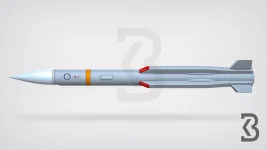Hindustan Aeronautics Limited (HAL) has initiated a significant modernisation project for 84 Sukhoi Su-30 MKI fighter jets of the Indian Air Force (IAF).
This ambitious programme, dubbed the "Super-30" upgrade, is projected to take five years for design and development before the enhancements are implemented.
The core aim is to convert the existing Su-30 MKI fleet into a more advanced combat platform by substituting older avionics and systems with indigenously developed technology, thereby strengthening India's self-sufficiency in defence production.
Officials at HAL have outlined that the design and development stage for this extensive upgrade is anticipated to span approximately five years. During this period, the focus will be on incorporating sophisticated, domestically engineered technologies into the Su-30 MKI airframes.
These improvements are intended to significantly boost the aircraft's fighting abilities, pilot awareness of the surrounding environment, and adaptability in various operational scenarios to address contemporary warfare demands.
A crucial element of this modernisation involves the removal of the aircraft's original avionics systems, which include the existing mission computers and radar equipment. These are set to be replaced by modern, Indian-made alternatives. These new systems are being developed through collaborative efforts involving national defence organisations like the Defence Research and Development Organisation (DRDO) and various private sector industry partners.
It is expected that the upgraded aircraft will feature advanced mission computers, the indigenous 'Virupaaksha' Active Electronically Scanned Array (AESA) radar, and enhanced electronic warfare suites, which will markedly improve the aircraft's overall performance. The Virupaaksha radar, for instance, is a key component aimed at providing superior detection and tracking capabilities.
This "Super-30" initiative highlights India's strategic commitment to diminishing its reliance on international suppliers and promoting indigenous capabilities in the defence manufacturing sector.
HAL representatives have confirmed that the new avionics, including critical components like the mission computer and radar, will be entirely designed and manufactured within India.
These locally developed systems are anticipated to deliver enhanced performance characteristics compared to the current Russian-sourced equipment, enabling the Su-30 MKI to more effectively address emerging security threats within the region.
Upon the successful completion of the design and development phase, HAL intends to commence the rollout of the "Super-30" upgrades across the designated 84 Su-30 MKI aircraft. The process of retrofitting these fighters will likely be conducted in stages to ensure minimal interruption to the operational readiness of the IAF.
HAL officials have indicated that achieving Initial Operational Capability (IOC) for the modernised aircraft could take nearly five years from the official commencement of the programme, reflecting the intricate nature of such a comprehensive overhaul.
The upgrade procedure for each aircraft will entail substantial modifications. This includes the stripping out of outdated systems, the integration of new, advanced avionics, and comprehensive testing procedures to guarantee both reliability and high performance.
HAL's facility in Nashik, which has extensive experience in the production and maintenance of the Su-30 MKI fleet, is expected to be a key centre for carrying out these complex upgrades.
The "Super-30" upgrade programme represents a vital step in ensuring the continued operational relevance of the Su-30 MKI, which forms the backbone of the IAF's fighter aircraft fleet.
With 84 aircraft scheduled for this modernisation, the initiative is poised to significantly bolster the IAF's combat strength, especially in light of the evolving security landscape in the region.
These upgraded jets are projected to serve for several more decades, offering a cost-effective strategy to maintain air superiority until the future induction of next-generation fighter platforms, such as the Advanced Medium Combat Aircraft (AMCA), which is also under development in India.

